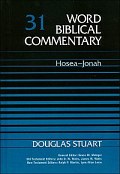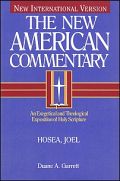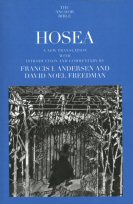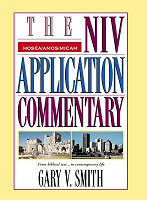Best Resources on Hosea
The prophet Hosea intentionally marries an unfaithful woman to symbolically portray God’s relationship with unfaithful Israel. Hosea’s prophecies elaborate on this metaphor, calling Israel to account for idolatry and foretelling judgment but also promising God’s faithfulness despite Israel’s mistakes.
Hosea is the first of 12 short Prophetic Books known as the Minor Prophets. In the Hebrew Bible version of the Old Testament, these are collected into a single work called “The Book of the Twelve” (or simply “The Twelve”) because they were originally contained together on one scroll.
—Faithlife Study Bible, Lexham Press
Everything You Need to Study & Teach Hosea
Expository Preaching Kits are curated resources all focused on helping you teach a single book of the Bible—keeping you prepared without weighing you down.
Best Commentaries on Hosea
Douglas Stuart, Word Biblical Commentary (WBC), Thomas Nelson, 1987, 588 pp.
Study the books of Hosea, Joel, Amos, Obadiah, and Jonah with pioneering Old Testament scholar Douglas Stuart. Heartbreaking, strange, and hopeful stories, these books are among the Bible’s most misunderstood. Stuart illuminates their meaning by examining their historical context and unlocking their mysterious stories and prophecies.
- Level: Advanced
- Type: Technical
Duane A. Garrett, New American Commentary (NAC), B&H, 1997, 406 pp.
In Hosea and Joel the implement employed to capture the attention and hearts of God's people is the symbol. In Joel it is the locust, a symbol of impending destruction. In Hosea the prophet himself— and his scorned but constant love—dramatically portrays God's message of grace and his call to repent.
- Level: Intermediate
- Type: Expository
Francis I. Andersen, Anchor Yale Bible (AYB), Yale University Press, 2008, 720 pp.
Hosea is the result of a collaboration by world-renowned scholars Francis I. Andersen and David Noel Freedman. This new translation and commentary is based on one of the oldest of prophetic writings. The translation is unique insofar as the literary integrity of the text is scrupulously adhered to. For both scholars and general readers, the commentary notes contain cultural and linguistic information that sets each passage within the socio-historic context of the eighth century BC. Hebrew vocabulary, syntax, and poetic language are examined in an effort to confront one of the most obscure sections of biblical literature. Eight pages of photographs and illustrations are also included, which take readers into the wonders of the Iron Age in which Hosea lived.
- Level: Advanced
- Type: Technical
Gary V. Smith, NIV Application Commentary (NIVAC), Zondervan, 2001, 608 pp.
Scratch beneath the surface of today’s culture and you’ll find we’re not so different from ancient Israel. True, our sophistication, mobility, and technology eclipse anything the Israelites could have imagined. Our worship is far different, to say nothing of our language and customs. Yet if the prophets Hosea, Amos, and Micah were to visit us today, we might be shocked to see how little their messages would differ from the ones they delivered 2,800 years ago. Revealing the links between Israel in the eighth century BC and our modern world, Gary V. Smith shows how the prophetic writings of Hosea, Amos, and Micah speak to us today with relevance and conviction.
- Level: Intermediate
- Type: Devotional
Derek Kidner, Bible Speaks Today (BST), InterVarsity Press, 1984, 142 pp.
Derek Kidner takes us through the unfolding story of Hosea and his wife, Gomer, explains the basic message, points out the subtleties, and encourages readers to live lives worthy of God who loves the loveless.
- Level: Basic
- Type: Devotional
Best Books on Hosea

Prophecy, Poetry and Hosea
The books of the Latter Prophets have traditionally been treated as persuasive speeches and interpreted according to their rhetoric. At the same time, interpreters recognize the poetic form of much prophecy. This study takes up the notion of the “prophet” as “poet." Focusing on wordplay in Hosea and on the lyrical plot of that book, the case is made for treating Hosea as a stark, full-length poem of inexhaustible power.
Learn more
Hosea: An Israelite Prophet in Judean Perspective
In this study, biblical scholar Emmerson investigates the influence of the Judean kingdom on the writing of the book of Hosea. She focuses on three major areas: expressions of hope, references to the Southern Kingdom, and mentioned practices of the Northern Kingdom. By examining these areas, Emmerson explores the extent of Judean activity and how much redaction occurred in the text. She also considers historical, theological, and national implications, examining the development and reception of Hosea. Emmerson references other biblical thinkers in this area and brings a solid understanding of the issues and ideas associated with this topic.
Learn more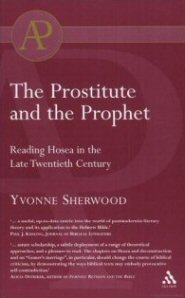
The Prostitute and the Prophet: Reading Hosea in the Late Twentieth Century
Sherwood unravels the first three chapters of Hosea by examining the particular complexities of the text and confronts the frictions that arise between the text and reader. She considers four problematic areas: the conflict between text and reader over the "improper" relationship between Hosea and Gomer; the bizarre prophetic sign language that conscripts people into a cosmic charade; the text’s propensity to subvert its central theses; and the emergent tensions between the feminist reader and the text. Aiming to bring together literary criticism and biblical scholarship, Sherwood provides lucid introductions to ideological criticism, semiotics, deconstruction, and feminist criticism, while also focusing on the implications of these approaches not only for the book of Hosea but for biblical studies in general.
Learn more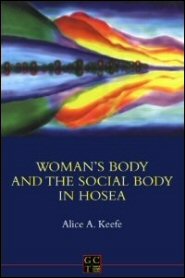
Woman’s Body and the Social Body in Hosea 1–2
Keefe's analysis dismantles the androcentric and theological assumptions that have determined the dominant reading of Hosea's metaphor of Israel as the adulterous wife of God. It shows how the projection of symbolic associations of women with nature, sexual temptation, and sin have anachronistically determined this metaphor as referring to Israel's apostasy in a lurid “fertility cult." Against this reading, Keefe's study considers Hosea 1–2 in the context of the association of sexual transgression and social violence in biblical literature. In this light, Hosea's symbol of Israel as an adulterous woman is read as a commentary upon the structural violence in Israelite society that accompanied the eighth century boom in “agribusiness” and attendant processes of land consolidation.
Learn more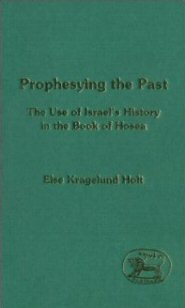
Prophesying the Past: The Use of Israel’s History in the Book of Hosea
Prophesying the Past focuses on the impact of tradition and history on the construction of the book of Hosea. Biblical scholar Holt examines the background of Israel to investigate how it is used in Hosea. She looks at common views of the book of Hosea and presents new methodologies on tradition and redaction. Holt uses literary and theological techniques to search the text for meaning. The first part of the study is exegesis, followed by a section on prophetic tradition.
Learn moreBest Courses on Hosea
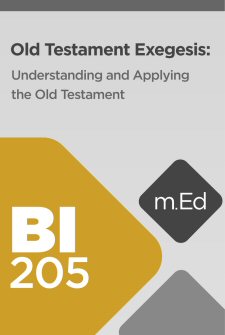
Mobile Ed: BI205 Old Testament Exegesis: Understanding and Applying the Old Testament (15 hour course)
Embark on a journey of OT Hebrew exegesis with Jason DeRouchie. The books of the OT were the only Scriptures Jesus had. It was books like Genesis, Deuteronomy, Isaiah, and Psalms that shaped Jesus’ upbringing and guided his life in ministry as the Jewish Messiah. It was these Scriptures Jesus identified as God’s Word and that he considered to be authoritative; it was these Scriptures he believed called people to know and believe in God and guarded them against doctrinal error and hell. This course will give you the tools you need to access meaning in the OT, then apply it to your life. It will help you to grow in reading God’s living Word for depth and not just distance.
Learn more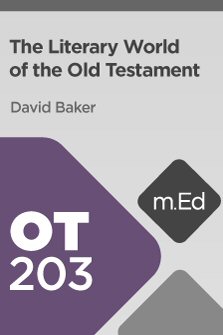
Mobile Ed: OT203 Literary World of the Old Testament (6 hour course)
Join David W. Baker on a whirlwind tour to explore the Old Testament from many different angles and how it relates to ancient Near Eastern literature. From creation accounts and stories of destruction to Wisdom Literature, discover different biblical literary genres that have parallels in ancient Near Eastern literature. Explore extrabiblical historical texts that mention key events and figures from the Old Testament. Understand how Israel fits into and is impacted by its ancient Near Eastern environment but also how it is separate and unique, mainly on a theological level, but also by its distinct worldview.
Learn more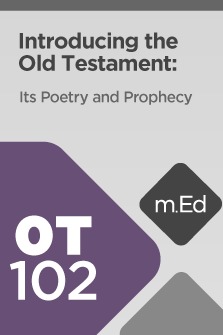
Mobile Ed: OT102 Introducing the Old Testament: Its Poetry and Prophecy (6 hour course)
This course provides a practical foundation for reading the poetry and prophecy of the Old Testament. Dr. David Baker begins by discussing poetic writing in general, then the elements specific to both Hebrew and English poetry. Applying these elements to the text, he examines the content, structure, and themes of the Psalms, Proverbs, Lamentations, Job, Ecclesiastes, and the Song of Songs. Dr. Baker then turns to the Prophetic Books, providing historical background, theological motifs, and the structure and content of specific books. He shows that these ancient messages remain relevant in modern life.
Learn more
Mobile Ed: OT204 Social World of the Old Testament (4 hour course)
In an age of international travel and migration, we’re familiar with people who look, sound, eat, and believe differently than we do. To become friends, it’s helpful to understand where they come from and how they do things differently, or the same, as we do. In the same way it is necessary to understand someone who comes from a different place than we do, how much more necessary is it to understand someone who is from not only a different geographical place but also a different time than we are? The Old Testament starts at the beginning of the world. This course will undertake the task of crossing the bridges of geography, climate, time, and a landscape unknown to us: ancient Israel. Throughout the course, David W. Baker will address aspects of life from our own culture and time, as well as family structure and societal systems from ancient Israelite life. As you learn more about the social world of the Old Testament, you will be struck not only by our differences but also our common humanity and that we share the same dreams, hopes, and fears as they did.
Learn more